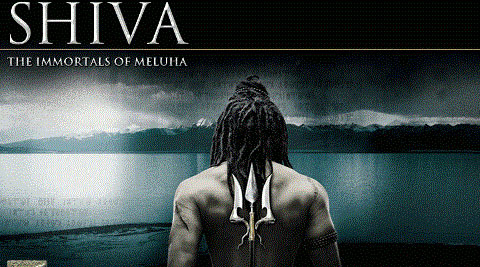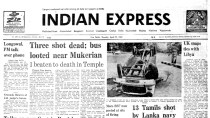- India
- International
The new can-do Hindu
Hindu culture has moved beyond the tribalistic politics of the 1980s and 1990s. It may be the beginning of what it means to be Hindu in a modern, diverse and global world.
 The novels of Amish Tripathi, Anand Neelakantan, Ashwin Sanghi and others show us an essentially modern Hindu imagination rising to re-imagine the past.
The novels of Amish Tripathi, Anand Neelakantan, Ashwin Sanghi and others show us an essentially modern Hindu imagination rising to re-imagine the past.
BY: Vamsee Juluri
Hindu culture has moved beyond the tribalistic politics of the 1980s and 1990s. It may be the beginning of what it means to be Hindu in a modern, diverse and global world.
The seemingly unstoppable ascent of Narendra Modi needs to be seen not simply as a resurgence in Hindu nationalism of the Ram Janmabhoomi kind but more broadly in relation to a profound generational and cultural change in how Hinduism is understood and lived today, a change that seems to have passed unnoticed.
Regardless of one’s views of Modi and his politics, one needs to recognise that everyday Hindu life and culture in this country have moved beyond the tribalistic identity politics of the 1980s and 1990s. It marks, perhaps, the beginning of a new sense of what it means to be Hindu in a modern, diverse, global, and indeed, secular world too. Its signs are mostly in the popular culture of the young, rather than in any serious commentary about Hinduism (and that, frankly, is a problem for the intellectual classes that needs to be addressed).
The signs of these new emerging sensibilities can be seen widely in the recent resurgence of mythology in the popular culture. The novels of Amish Tripathi, Anand Neelakantan, Ashwin Sanghi and others show us an essentially modern Hindu imagination rising to re-imagine the past. To merely dismiss all of this, as secular commentators often do, as the normalisation of Hindutva in Indian public culture, misses the depths of the new narratives about being Hindu (and Indian, generally) that are emerging. And in these new narratives, Hindus see themselves as neither purely spiritual and idealistic, nor entirely militant and tribal. But they are action-oriented. They just do it.

Tripathi’s Shiva, for example, is a fun-loving human, a “dude”, who struggles to earn his worthiness to bear the “Mahadev” image that has been foisted upon him. Neelakantan’s Ravana is as modern as any character in a good novel might get, deeply vulnerable to our sympathy, and a moral renegade at the same time. The days of simplistic good and bad sides, Devas and Asuras, and perhaps “good Hindus” and “bad others”, are gone; in our popular imagination, at least. It is a marked change in the forms and concerns of earlier popular depictions of mythology, especially the Doordarshan epics of the 1980s, which scholars argue directly or indirectly emphasised a historical, nationalistic narrative of Hinduism rather than a purely devotional one.
But the sensibilities of today’s mythological imagination are not entirely unproblematic on one important point which, coincidentally enough, given Modi’s promise, revolves around governance. Many of the characters in the new novels are fantastic technocrats; we find Star Trek-like doctors, efficient engineers, resourceful meeting-savvy managers, and of course, calculating kingmakers. It is almost as if the Gita’s call for detachment has turned into an amoral perception of dharma as pure techne, in fiction and, of course, in some of today’s aspirational youth culture as well.
However, despite this seeming dallying with an amoral action ethic, the stories that young India is fascinated by today have not shied away from a social consciousness. Today’s Shiva could end untouchability and unite a warring subcontinent, even spurring its elites to recognise their mutant subalterns as their own; and not in some condescending fashion, but by actually joining their fight for rights. Today’s Sati could leap back into battle with all the double-sided angst and pressure of a modern career woman committed to proving a professional point.
There is promise in today’s stories, for tomorrow’s politics.
If new ideas about what it means to be Hindu, Indian, and indeed human, continue to find popular resonance, especially among the young, it might well mark the return of a positive Hindu presence in public culture and life. The last time we had Hinduism in the public culture in such a big way, but also in a good way, was in the days of Mahatma Gandhi. Though some critics on the right and left now dismiss his vanguard Hindu practice as either eccentricity or hegemony respectively, the fact remains that he was the centre of a powerful, progressive, public Hinduism. After him, we did not see Hinduism inform politics or public life in any major way until the 1980s, and that phase, naturally, left much to be desired.
Some of the rough edges of Hindutva are neither over, nor will they leave our political life. The Hindu nation idea will remain, as historians have noted, as long as the two-nations legacy of 1947 remains. It can however, move beyond the ugliness with which it rose screaming two decades ago. Today’s Hindu public culture is governed not by gung-ho tribalism, but a more sophisticated union of Hindu ethical sensibility and modern, secular imperative. In our popular imagination at least, we now see the stirrings of such a vision. We must now hope that life will imitate art.
Juluri, professor of media studies at the University of San Francisco, is the author of ‘The Mythologist: A Novel’ (Penguin India)
EXPRESS OPINION
More Explained
Apr 23: Latest News
- 01
- 02
- 03
- 04
- 05









































